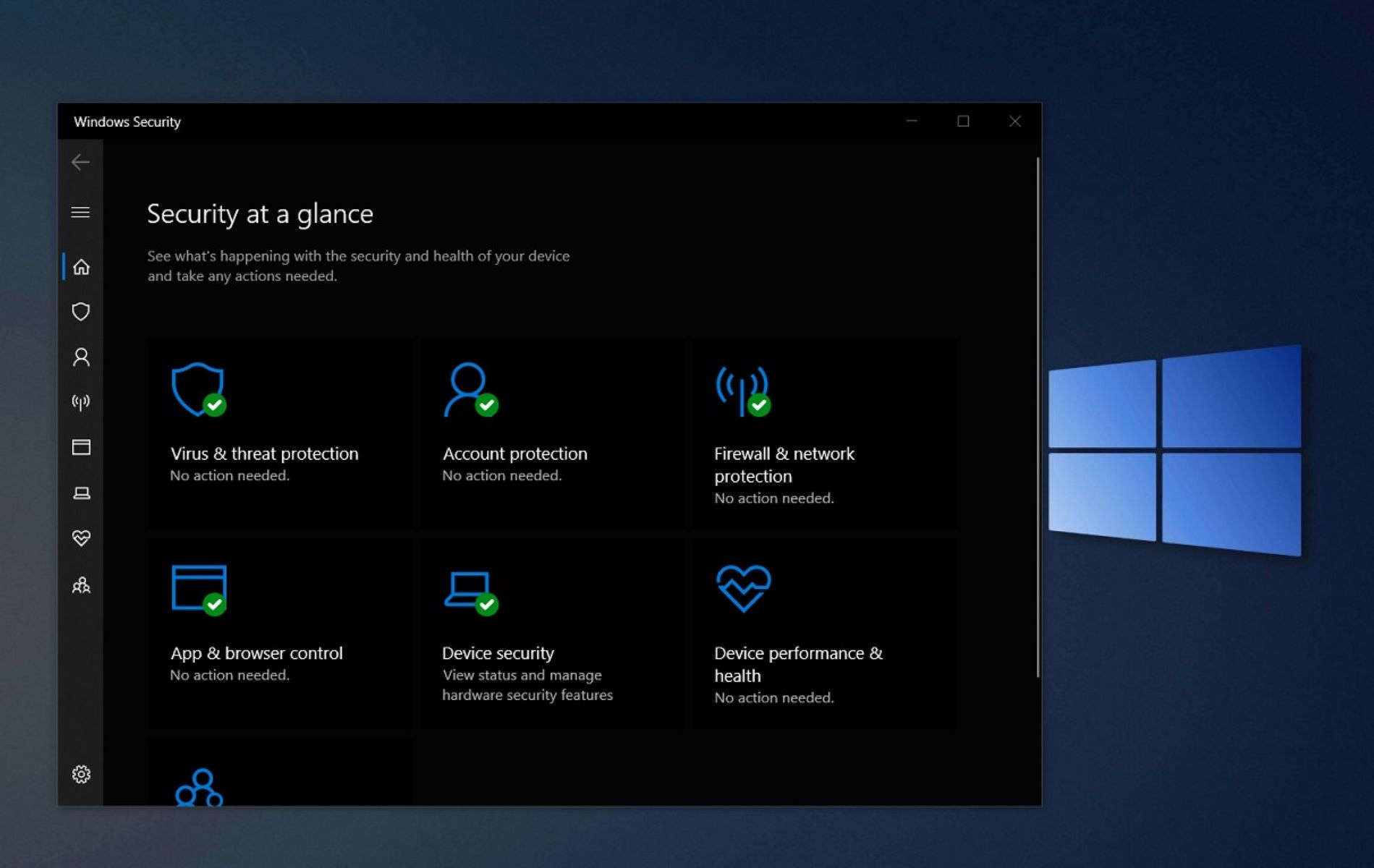Introduction
Welcome to the world of customer remediation in banking. In today’s financial landscape, banks play a vital role in managing the financial needs of individuals and businesses. However, like any other industry, banking is not immune to errors or misconduct that may negatively impact customers. This is where customer remediation comes into play.
Customer remediation refers to the process of rectifying customer issues and providing appropriate compensation or resolution when a bank’s products, services, or actions result in harm or inconvenience to customers. It is a fundamental aspect of good customer service and demonstrates a bank’s commitment to addressing customer concerns and ensuring their satisfaction.
Customer remediation holds great importance in the banking sector for several reasons. Firstly, it helps maintain the integrity and reputation of the bank. By promptly acknowledging and correcting any mistakes or misconduct, banks can enhance trust and confidence among their customer base and the general public.
Secondly, effective customer remediation is essential for regulatory compliance. Banks operate under strict regulatory frameworks to ensure fair treatment of customers and adherence to ethical practices. Failing to address and rectify customer issues can lead to regulatory penalties and damage the bank’s reputation.
Moreover, customer remediation is crucial for maintaining long-term customer relationships. In today’s competitive banking industry, customer loyalty is highly valued. By promptly and fairly addressing customer concerns, banks can foster trust, loyalty, and satisfaction among their clientele, leading to increased customer retention and positive word-of-mouth referrals.
There are various types of customer remediation in banking, depending on the nature of the issue and the appropriate resolution. These may include financial compensation, product replacement or repair, account adjustments, fee waivers, apology letters, and personalized remediation plans.
In the following sections, we will explore the different types of customer remediation, common issues that require remediation, how banks handle these situations, the challenges and benefits of customer remediation, and best practices for implementing an effective customer remediation strategy in the banking sector.
Definition of Customer Remediation
Customer remediation in the banking industry refers to the process of addressing, resolving, and compensating customers who have been adversely affected by a bank’s products, services, or actions. It involves rectifying errors, misconduct, or any other situation where customers have suffered financial, emotional, or reputational harm.
The goal of customer remediation is to restore customers to their pre-incident position and provide fair compensation for any losses or inconveniences they have experienced. It is a way for banks to acknowledge their mistakes and take responsibility for the impact on their customers.
Customer remediation can encompass various actions and remedies, depending on the specific circumstances. These may include financial compensation, refunds, fee waivers, adjustments to account balances, provision of new or repaired products or services, and personalized remediation plans tailored to the individual needs of affected customers.
It is important to note that customer remediation goes beyond simply reimbursing customers for financial losses. It also involves addressing any emotional distress, inconvenience, or damage to reputation that customers may have suffered as a result of the bank’s actions. This holistic approach to remediation aims to restore the customer’s trust and confidence in the bank.
Customer remediation is typically governed by internal bank policies, industry regulations, and legal requirements. Banks are expected to have robust processes and systems in place to promptly identify and resolve customer issues, ensuring fairness, transparency, and compliance throughout the remediation process.
The principles of fairness, transparency, and accountability are central to customer remediation. Banks must ensure that their remediation processes are accessible to all affected customers, regardless of their financial situation or level of knowledge. Communication with customers should be clear and concise, explaining the issue, the proposed resolution, and any entitlement to compensation.
By providing a clear and comprehensive definition of customer remediation, banks can demonstrate their commitment to customer-centricity and their willingness to take responsibility for any errors or misconduct. This not only helps in resolving individual customer issues but also contributes to building a positive reputation and long-term customer loyalty.
Importance of Customer Remediation in Banking
Customer remediation plays a crucial role in the banking industry, contributing to the overall customer experience, trust, and regulatory compliance. Let’s explore why customer remediation is important for banks:
1. Maintaining Reputation: Customer remediation is vital for preserving a bank’s reputation. When banks acknowledge their mistakes and take prompt action to rectify any issues, they demonstrate their commitment to customer satisfaction and ethical conduct. This helps build trust and confidence among customers and the wider community.
2. Regulatory Compliance: Banks operate in a highly regulated environment with specific guidelines and regulations to protect customers. Customer remediation is a key aspect of regulatory compliance, ensuring that banks adhere to the necessary protocols and standards. By promptly addressing customer issues, banks demonstrate their commitment to fair treatment and ethical business practices.
3. Customer Retention and Loyalty: Effective customer remediation plays a crucial role in maintaining long-term customer relationships. When banks promptly address and resolve customer issues, it shows that they value their customers’ concerns and are committed to their satisfaction. This fosters loyalty, leading to higher customer retention rates and positive word-of-mouth referrals.
4. Enhancing Customer Experience: Customer remediation is an integral part of delivering a positive customer experience. When banks respond quickly and fairly to customer concerns, they can minimize the negative impact and inconvenience experienced by customers. This proactive approach helps in improving the overall customer experience and satisfaction levels.
5. Building Trust and Confidence: Customer trust is paramount in the banking industry. By promptly addressing and compensating customers for any harm or inconvenience caused, banks can foster trust and confidence. This not only strengthens the bond with existing customers but also attracts new customers who prioritize ethical business practices and exceptional customer service.
6. Avoiding Legal Consequences: Failure to address customer issues and provide appropriate remediation can lead to legal consequences. Banks may face lawsuits, regulatory penalties, and damage to their reputation if they do not fulfill their obligations towards customers. By implementing effective customer remediation practices, banks can mitigate these risks and maintain a strong legal standing.
Overall, customer remediation is of paramount importance in the banking industry. It helps banks uphold their reputation, meet regulatory requirements, enhance the customer experience, build trust and loyalty, and avoid legal consequences. By prioritizing customer remediation, banks can demonstrate their commitment to putting the needs and satisfaction of their customers at the forefront.
Types of Customer Remediation in Banking
Customer remediation in the banking sector encompasses various types of actions and remedies to address and compensate customers for the harm or inconvenience they have experienced. Let’s explore some of the common types of customer remediation:
1. Financial Compensation: This involves providing customers with monetary reimbursement for any financial losses incurred as a result of the bank’s error or misconduct. It could include refunding fees, interest, or charges incorrectly applied, reimbursing unauthorized transactions, or compensating for any direct financial damages suffered.
2. Product Replacement or Repair: In cases where faulty or defective products or services have caused harm to customers, banks may provide replacement products or arrange for repairs at no additional cost. This ensures that customers receive products that meet the expected standards and functionality.
3. Account Adjustments: When errors or mistakes occur in customers’ accounts, banks may adjust the account balance or make corrections to rectify the issue. This includes fixing incorrect interest calculations, reversing improper charges, or adjusting balance discrepancies.
4. Fee Waivers: Banks may waive certain fees or charges that were levied due to the bank’s error or misconduct. This helps alleviate the financial burden placed on customers and demonstrates the bank’s commitment to making things right.
5. Apology Letters: Along with appropriate compensation, banks may send apology letters to affected customers to express sincere regret for any inconvenience, stress, or harm caused. These letters often include an explanation of what went wrong, how the issue has been resolved, and reassurances that steps have been taken to prevent a recurrence.
6. Personalized Remediation Plans: In complex or severe cases, banks may design personalized remediation plans to address the specific needs and circumstances of affected customers. This could include tailored solutions such as loan modifications, extended repayment terms, or specialized support to help customers recover from the impact of the bank’s actions.
It is important for banks to consider the individual circumstances of each case when determining the appropriate type of remediation. This ensures that customers are treated fairly and receive compensation that adequately addresses the harm they have suffered.
Banks should have clear policies and procedures in place to document and track the types and extent of remediation provided to customers. This helps maintain consistency, transparency, and accountability in the remediation process.
By offering various types of customer remediation, banks can demonstrate their commitment to rectifying errors, ensuring customer satisfaction, and rebuilding trust and confidence among their customer base.
Common Issues That Require Customer Remediation in Banking
Customer remediation in the banking industry is necessary in response to various issues that may cause harm or inconvenience to customers. Let’s explore some of the common issues that require customer remediation:
1. Unauthorized Transactions: If a customer’s account is compromised, resulting in unauthorized transactions, it is the bank’s responsibility to investigate and provide remediation. This may involve reimbursing the customer for any financial losses incurred and restoring their account to its pre-incident state.
2. Service Errors or Delays: When banking services, such as funds transfers, bill payments, or account updates, are not processed accurately or in a timely manner, it can lead to inconvenience and financial consequences for customers. Banks should rectify the errors and compensate customers for any resulting losses or charges.
3. Incorrect Fees or Charges: If a bank has erroneously charged fees or imposed charges on a customer’s account, it is essential to promptly rectify the mistake. This may involve refunding the fees, adjusting the account balance, and providing an explanation or apology to the customer.
4. Product or Service Misrepresentation: If a bank has provided inaccurate or misleading information about its products or services, customers may suffer financial harm or be led to make uninformed decisions. In such cases, customer remediation may involve compensating for any losses or offering alternative solutions that meet customers’ needs.
5. Failure to Meet Regulatory Requirements: Banks are obligated to comply with various regulations to ensure fair treatment of customers. If a bank fails to meet these requirements and customers are adversely affected, remediation is necessary. This may involve compensating customers, providing remedies to rectify the situation, and implementing measures to prevent future non-compliance.
6. Customer Data Breaches: In the event of a data breach where customer information is compromised, banks need to take immediate action to safeguard customer data and provide remediation to affected individuals. This may include providing credit monitoring services, identity theft protection, or financial compensation for any losses incurred.
7. Mis-selling of Products or Services: If a bank has sold products or services to customers that are unsuitable, misleading, or not aligned with their financial needs, it can lead to financial losses or negative consequences for customers. In such cases, customer remediation may involve compensating customers, offering alternative solutions, and providing education or advice to prevent future mis-selling.
It is crucial for banks to establish robust systems and mechanisms to promptly identify and address these issues. Clear protocols and guidelines should be in place to ensure that affected customers receive fair and appropriate remediation.
By addressing these common issues and providing timely customer remediation, banks can demonstrate their commitment to customer satisfaction, regulatory compliance, and accountability.
How Banks Handle Customer Remediation
When faced with customer remediation situations, banks have established processes and procedures in place to handle these issues efficiently and effectively. Let’s explore how banks typically handle customer remediation:
1. Identification and Reporting: Banks have mechanisms in place to identify and report instances where customers have been adversely affected. This can be through customer complaints, internal audits, regulatory oversight, or proactive monitoring systems.
2. Investigation: Once an issue is identified, banks conduct a thorough investigation to uncover the root cause and determine the extent of the impact on customers. This investigation involves gathering evidence, analyzing data, and collaborating with relevant departments or external investigators if necessary.
3. Resolution: After the investigation, banks work towards resolving the issue and providing appropriate remediation to affected customers. This can involve refunding fees, reimbursing losses, adjusting account balances, replacing products or services, or offering alternative solutions to rectify the situation.
4. Communication: Clear and effective communication is key during the customer remediation process. Banks communicate with affected customers to explain the issue, the steps taken to address it, and the intended remediation. Transparency and timely updates help keep customers informed and reassured throughout the process.
5. Compensation: Banks determine the appropriate compensation based on the severity of the issue, the impact on customers, and any regulatory requirements or guidelines. Financial compensation, fee waivers, account adjustments, or other forms of restitution are provided as necessary to adequately compensate customers for any harm or inconvenience suffered.
6. Tracking and Monitoring: Banks maintain comprehensive records of customer remediation cases to track the progress of each case and ensure that all required actions are completed. This tracking and monitoring process helps banks maintain accountability and provides data for analysis and improvement of remediation processes.
7. Improvement Measures: Banks use customer remediation cases as learning opportunities to identify and address underlying issues in their processes, systems, or training. By implementing necessary improvements, banks aim to prevent similar issues from recurring in the future and enhance their overall operational effectiveness.
It is important to note that banks must adhere to regulatory guidelines and industry best practices when handling customer remediation. They must also prioritize fairness, transparency, and integrity throughout the process to build and maintain customer trust.
By following these established steps, banks can effectively handle customer remediation, demonstrate their commitment to customer satisfaction, and uphold their reputation as responsible financial institutions.
Challenges and Benefits of Customer Remediation in Banking
Customer remediation in the banking industry comes with its own set of challenges, as well as significant benefits. Let’s delve into the challenges and benefits associated with customer remediation:
Challenges:
1. Complexity: Customer remediation can be complex, especially when dealing with large-scale incidents or intricate financial products. Ensuring fair and accurate compensation for all affected customers requires thorough investigation, data analysis, and tailored solutions.
2. Regulatory Compliance: Banks operate under strict regulatory frameworks, and ensuring compliance is a challenge. Meeting regulatory requirements, including timely reporting and adherence to remediation processes, requires dedicated resources and continuous monitoring.
3. Resource Allocation: Allocating the necessary resources, both financial and human, to handle customer remediation cases can be a challenge. Banks need to maintain a dedicated team with expertise in remediation processes, and allocate funds to compensate customers appropriately.
Benefits:
1. Customer Satisfaction and Loyalty: Effective customer remediation leads to higher levels of customer satisfaction. When banks promptly address and compensate customers for any harm suffered, it enhances customer trust and loyalty. Satisfied customers are more likely to remain with the bank and recommend its services to others.
2. Reputation Enhancement: Successful customer remediation helps protect and enhance a bank’s reputation. By demonstrating transparency, accountability, and a commitment to resolving issues, banks can build a positive reputation and differentiate themselves from competitors.
3. Regulatory Compliance: Adhering to regulatory requirements through effective customer remediation ensures that banks meet industry standards and avoid penalties or legal consequences. It demonstrates a bank’s commitment to ethical practices and strengthens its relationship with regulatory bodies.
4. Risk Mitigation: Handling customer remediation cases effectively helps banks mitigate risks. By addressing issues promptly and providing fair compensation, banks can prevent the escalation of customer complaints, legal actions, and reputational damage.
5. Operational Improvement: The process of customer remediation offers valuable insights into operational gaps or weaknesses that need to be addressed. Banks can leverage these insights to improve internal processes, systems, and training, leading to enhanced operational effectiveness and customer service.
6. Long-Term Customer Relationships: Effective customer remediation contributes to building long-term relationships with customers. By providing fair compensation and resolving issues promptly, banks foster trust and loyalty, leading to increased customer retention and positive word-of-mouth referrals.
While customer remediation in banking does present challenges, the benefits of implementing a robust and customer-centric approach far outweigh the challenges. By prioritizing fairness, transparency, and accountability, banks can enhance their reputation, ensure regulatory compliance, and foster long-lasting relationships with their customers.
Best Practices for Implementing Customer Remediation in Banking
Implementing effective customer remediation practices is vital for banks to ensure fair treatment of customers and uphold their reputation. Let’s discuss some best practices for implementing customer remediation in the banking industry:
1. Establish Clear and Comprehensive Policies: Banks should create clear and comprehensive policies that outline the principles, procedures, and responsibilities associated with customer remediation. These policies should be easily accessible to both customers and employees, providing guidance on the steps to be taken when addressing customer issues.
2. Prompt Identification and Reporting: Implement mechanisms to promptly identify and report customer issues or incidents that require remediation. This can be achieved through robust complaint management systems, proactive monitoring, or regular internal audits. Timely reporting allows for quick action and resolution.
3. Thorough Investigation: Conduct thorough and unbiased investigations to determine the root cause of the issue and assess the impact on customers. Utilize appropriate resources, such as specialized investigative teams or external consultants, to ensure a comprehensive and impartial analysis.
4. Transparency and Communication: Maintain transparent and clear communication channels with affected customers throughout the remediation process. Keep customers informed of the progress, steps taken, and expected timeline for resolution. Communication should be clear, concise, and empathetic to ensure customers feel understood and supported.
5. Appropriate Compensation: Determine fair and appropriate compensation based on the severity of the issue and the impact on customers. Compensation should be calculated accurately and in alignment with industry standards, regulatory guidelines, and internal policies. Provide compensation promptly and transparently to affected customers.
6. Continuous Improvement: Regularly review and assess customer remediation processes to identify areas for improvement. Analyze trends, metrics, and feedback to identify recurring issues or gaps in the remediation process. Use this information to enhance internal controls, training programs, and operational procedures to prevent similar issues in the future.
7. Staff Training and Development: Train and educate employees on customer remediation practices, emphasizing the importance of empathy, fairness, and professionalism when dealing with customer issues. Provide ongoing training to keep employees updated on regulatory changes, best practices, and emerging trends in customer remediation.
8. Regulatory Compliance: Stay updated with relevant regulatory requirements and guidelines pertaining to customer remediation. Ensure that the processes and practices implemented align with the regulatory framework and industry best practices. Maintain a strong partnership with regulatory authorities through open communication and timely reporting.
9. Data Privacy and Security: Safeguard customer data and ensure compliance with data privacy regulations throughout the customer remediation process. Implement robust data protection measures, access controls, and monitoring systems to prevent unauthorized access or misuse of customer information.
10. Customer Feedback and Learning: Encourage customers to provide feedback on the remediation process, enabling banks to continuously learn and improve. Collecting and analyzing customer feedback helps identify areas for enhancement and provides insights into customer expectations and preferences.
By implementing these best practices, banks can build trust, loyalty, and satisfaction among their customers. Effective customer remediation processes ensure regulatory compliance, enhance the bank’s reputation, and demonstrate a commitment to fair and transparent practices.
Conclusion
Customer remediation is a crucial aspect of the banking industry, ensuring that customers are treated fairly and compensated appropriately for any harm or inconvenience caused by a bank’s products, services, or actions. It plays a vital role in maintaining customer satisfaction, regulatory compliance, and the overall reputation of a bank.
Throughout this article, we have explored the definition of customer remediation, its importance in the banking sector, and the various types of remediation that banks employ. We have also examined the common issues that require customer remediation and how banks handle these situations. Furthermore, we outlined the challenges and benefits of customer remediation, as well as best practices that banks should implement to ensure effective remediation processes.
It is essential for banks to maintain clear policies, swiftly identify customer issues, conduct thorough investigations, and communicate transparently with affected customers. By providing fair and appropriate compensation, banks can foster trust, loyalty, and satisfaction among their customer base. Furthermore, continuous improvement, staff training, and compliance with regulatory requirements are vital for successful customer remediation in the banking industry.
By prioritizing customer remediation, banks can demonstrate their commitment to putting customers first and rectifying any mistakes or misconduct that may occur. Effective customer remediation processes not only resolve individual customer issues but also contribute to overall customer satisfaction, regulatory compliance, risk mitigation, and long-term customer relationships.
In conclusion, customer remediation is an integral part of banking operations, ensuring fairness, accountability, and customer-centricity. By implementing the best practices outlined in this article, banks can navigate the challenges associated with customer remediation while reaping the many benefits it offers.

























